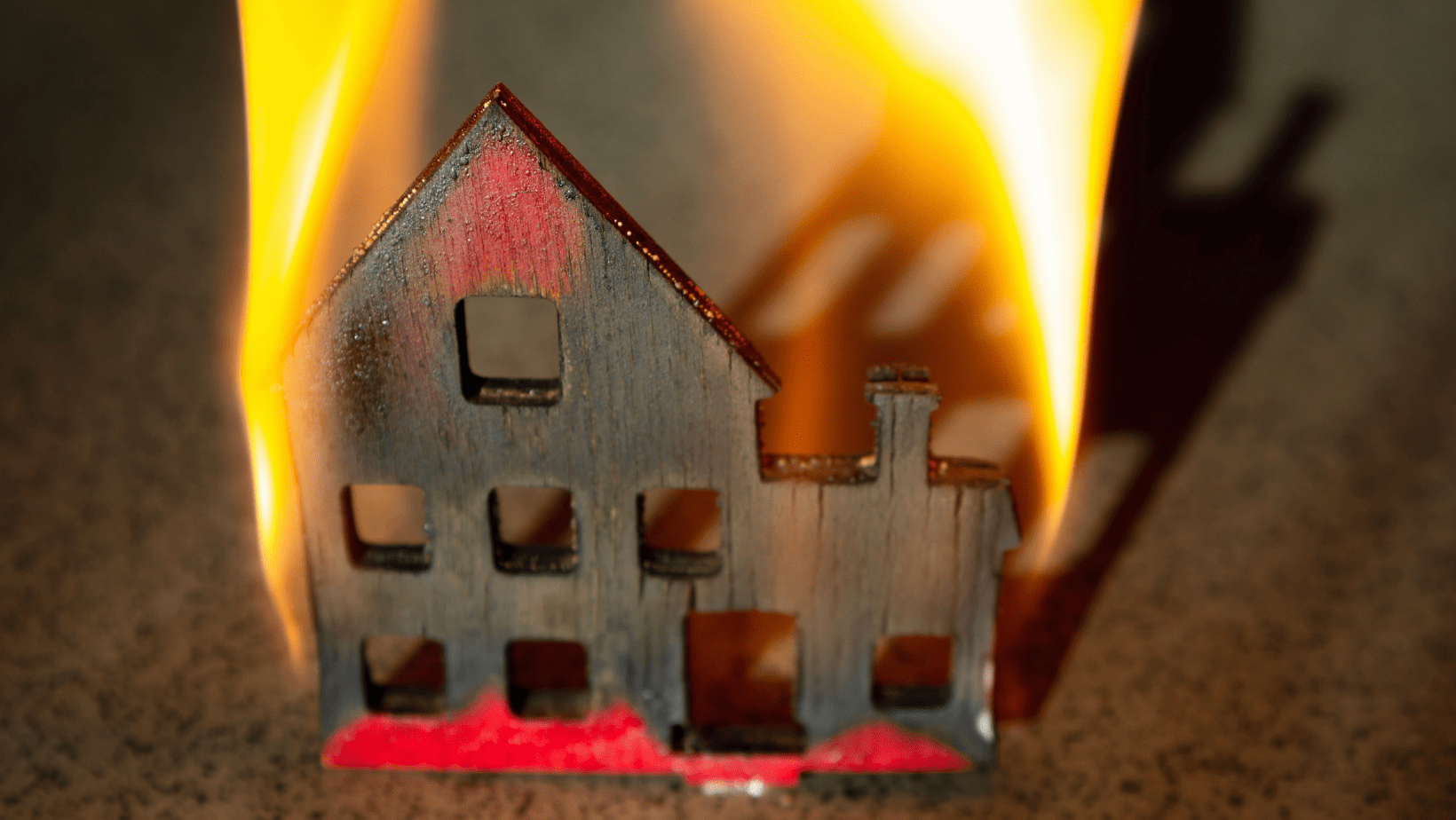
Fire insurance is a crucial safeguard for property owners, providing financial protection against the devastating effects of fire-related incidents. However, to ensure that you receive an adequate payout in the event of a claim, it is essential to declare the correct property value. This comprehensive guide will explore the importance of accurate property valuation, the elements of fire insurance, and practical tips for declaring your property’s value correctly.
“The importance of declaring the correct property value for fire insurance to ensure adequate payouts. Learn about key elements, common mistakes, recent fire incidents in India, and expert tips on choosing the right insurance provider. Stay informed with the latest trends in fire insurance, including technological advancements and peer-to-peer models. Safeguard your property with accurate valuation and comprehensive coverage.”
Understanding Fire Insurance
Fire insurance is a specialized form of property insurance that covers damages caused by fires, smoke, and water resulting from firefighting efforts. It includes coverage for the structure of the property and its contents. The primary purpose of fire insurance is to help property owners recover financially from the destruction and damage caused by fire.
Some of the latest trends in the fire insurance industry:
1. Technological Advancements
Big Data and Analytics: The use of big data and analytics is transforming the fire insurance industry. Insurers can now better assess risks and offer personalized policies based on detailed data analysis.
Internet of Things (IoT): IoT devices in homes and businesses provide real-time data on fire hazards, enabling proactive risk management. This technology helps in early detection and prevention of fires.
Artificial Intelligence (AI) and Machine Learning (ML): AI and ML are being used to streamline claims processing and detect fraud more efficiently. These technologies help insurers process claims faster and more accurately.
2. Integration with Other Insurance Products
Fire insurance is increasingly being integrated with other types of insurance products, such as homeowners and business insurance. This integration provides comprehensive coverage and simplifies the insurance process for policyholders.
3. Focus on Sustainability
Green Rebuilding Options: There is a growing emphasis on sustainability in fire insurance policies. Insurers are offering green rebuilding options, encouraging policyholders to rebuild using eco-friendly materials and practices.
4. Usage-Based Insurance Models
Usage-based insurance models are gaining popularity. These models adjust premiums based on the actual usage and risk profile of the insured property. This approach provides more accurate pricing and can lead to cost savings for policyholders.
5. Preventive Measures and Risk Reduction Programs
Insurers are increasingly focusing on preventive measures and risk reduction programs. These initiatives aim to reduce the likelihood of fire incidents and minimize potential damages. Examples include offering discounts for installing fire alarms and sprinkler systems.
6. Peer-to-Peer Insurance Models
Peer-to-peer (P2P) insurance models are emerging as a trend in the fire insurance market. In P2P insurance, a group of individuals pools their premiums to insure each other against fire risks. This model can lead to lower premiums and a more community-focused approach to insurance.
7. Increased Awareness and Demand
There is a growing awareness of the importance of fire insurance, driven by the increasing frequency of fire-related incidents and the rising value of properties. This awareness is leading to higher demand for fire insurance policies.
8. Product Innovation
Insurance companies are introducing innovative fire insurance products tailored to specific needs. For example, AXA Affin General Insurance Berhad launched a fire insurance solution specifically designed for small and medium enterprises (SMEs).
9. Regulatory Changes
Regulatory frameworks are becoming more stringent, requiring property owners to have adequate fire insurance coverage. These regulations are driving the adoption of fire insurance and ensuring that properties are adequately protected.
10. Online Insurance Platforms
The convenience of online insurance platforms is making it easier for property owners to purchase and manage fire insurance policies. These platforms offer a seamless experience, from policy selection to claims processing.
Importance of Declaring Correct Property Value
Declaring the correct property value is vital for several reasons:
- Adequate Coverage: Ensuring that your property is insured for its true value guarantees that you will receive sufficient funds to repair or rebuild in the event of a fire.
- Accurate Premium Calculation: Insurance premiums are calculated based on the declared value of the property. Underestimating the value can lead to lower premiums but inadequate coverage, while overestimating can result in unnecessarily high premiums.
- Avoiding Underinsurance: Underinsurance occurs when the declared value is less than the actual value of the property. This can lead to significant financial losses as the insurance payout may not cover the full cost of repairs or reconstruction.
Key Elements of Fire Insurance
- Insurable Interest: The policyholder must have a financial stake in the property being insured.
- Sum Insured: This is the maximum amount the insurer will pay in the event of a claim. It should reflect the property’s true value.
- Premium Payments: Regular premium payments are necessary to maintain coverage.
- Policy Terms: Understanding the terms and conditions of the policy is crucial to ensure there are no unexpected gaps in coverage.
How to Declare Property Value for Fire Insurance
- Professional Valuation: Hire a professional appraiser to assess the value of your property accurately. This includes the structure and any contents you wish to insure.
- Consider Replacement Cost: The declared value should reflect the cost to replace the property, not its market value. This includes construction costs, materials, and labor.
- Update Regularly: Property values can change over time due to renovations, market conditions, and inflation. Regularly update your insurance policy to reflect these changes.
- Include Contents: Ensure that the value of personal belongings, furniture, electronics, and other contents is included in the declared value.
Common Mistakes to Avoid
- Underestimating Property Value: This can lead to underinsurance and inadequate payouts.
- Overestimating Property Value: While this ensures adequate coverage, it can result in higher premiums.
- Ignoring Contents: Failing to include the value of contents can lead to significant out-of-pocket expenses in the event of a fire.
Statistics on Fire Insurance and Property Value in India
- Premium Growth: The fire insurance segment in India saw a significant growth in premiums, with a 15% increase from FY 2018-19 to FY 2019-20.
- Claim Frequency: The frequency of fire insurance claims in India has been relatively stable, with a slight increase observed in the last few years.
- State-wise Distribution: Maharashtra, Gujarat, and Tamil Nadu are among the top states in terms of fire insurance premium collection.
- Average Sum Insured: The average sum insured for fire insurance policies in India has been increasing, reflecting the rising property values and the need for adequate coverage.
- Claim Severity: The severity of fire insurance claims, measured by the average claim amount, has also been on the rise, indicating higher costs associated with fire damage repairs and reconstruction.
Recent Fire Incidents in India
- Chemical Factory Fire in Maharashtra: In May 2024, a devastating fire broke out at a chemical factory in Dombivli, Maharashtra, following an explosion in the factory’s boiler. The incident resulted in the deaths of at least nine people and injuries to 64 others.
- Fire at Mahakumbh Mela: In January 2025, a fire caused by a cylinder blast engulfed 18 tents at the Mahakumbh Mela. Fortunately, there were no casualties, and relief and rescue operations were promptly initiated.
- Plastic Bag Manufacturing Factory Fire in Noida: In January 2025, a massive fire erupted at a plastic bag manufacturing factory in Noida’s Phase 2 area. The fire department managed to control the blaze, and no casualties were reported.
- Furniture Market Fire in Mumbai: In January 2025, a major fire broke out at a furniture market in Mumbai’s Goregaon area, affecting five furniture shops. There were no casualties, but the fire caused significant property damage.
- Fire in Bandra East’s ONGC Colony: In January 2025, a fire engulfed 10-15 shanties in Bandra East’s ONGC Colony. Fortunately, no injuries were reported, and the fire was brought under control by the fire department.
Tips for Choosing an Insurance Provider
- Reputation and Reliability: Research the reputation of the insurance provider. Look for reviews and ratings from existing customers to gauge their reliability and customer service quality.
- Financial Stability: Ensure that the insurance company is financially stable. You can check their financial ratings from agencies like AM Best, Moody’s, or Standard & Poor’s.
- Coverage Options: Compare the coverage options offered by different providers. Ensure that the policy covers all potential risks and provides adequate protection for your property.
- Claim Settlement Ratio: Check the claim settlement ratio of the insurance company. A higher ratio indicates a better track record of settling claims promptly and fairly.
- Customer Service: Evaluate the customer service of the insurance provider. Good customer service is crucial for addressing queries, processing claims, and providing support during emergencies.
- Premium Rates: Compare premium rates from multiple providers. While cost is important, ensure that you are not compromising on coverage quality for lower premiums.
- Add-On Covers: Look for add-on covers or riders that can enhance your policy. These may include coverage for natural disasters, theft, or additional living expenses.
- Transparency: Choose an insurance provider that is transparent about their terms and conditions. Avoid companies with hidden clauses or unclear policy details.
Benefits of Accurate Property Valuation
- Peace of Mind: Knowing that your property is adequately insured provides peace of mind.
- Financial Security: Accurate valuation ensures that you have the financial resources to rebuild or repair your property after a fire.
- Compliance: Accurate declarations help in complying with insurance policy requirements, reducing the risk of claim denial.
Declaring the correct property value for fire insurance is essential to ensure adequate coverage and financial protection. By understanding the importance of accurate valuation, avoiding common mistakes, regularly updating your policy, choosing a reliable insurance provider, and considering expert advice, you can safeguard your property and assets effectively. Remember, fire insurance is not just a precaution; it’s a financial lifeline that helps you recover from devastating incidents.
-
RBI’s Approval: HDFC Group Gets 9.5% Stake Nod in IndusInd Bank
RBI’s shocking nod: HDFC Group can now seize up to 9.5% of IndusInd Bank—but is this a stealth
-
SBI’s YONO 2.0 Promises Faster, Smarter, Safer Payments — A Real Threat to PhonePe & GooglePay?
SBI surprises the digital world with YONO 2.0 — a power-packed super app ready to challenge PhonePe and
-
Indian Stocks Fall as Foreign Investors Extend Sell-Off: What’s Behind the Market Jitters?
Foreign investors are fleeing Indian stocks, triggering a wave of uncertainty on Dalal Street. What’s fueling this sudden
































